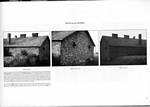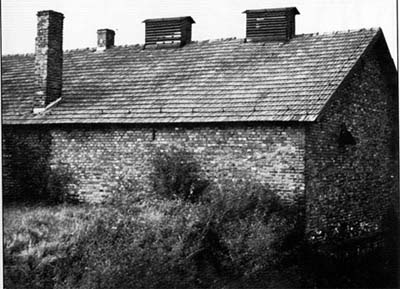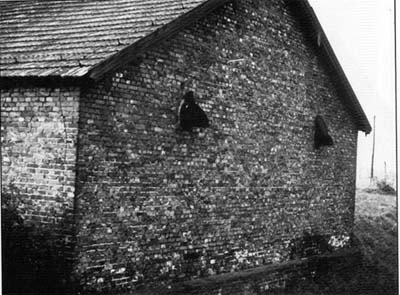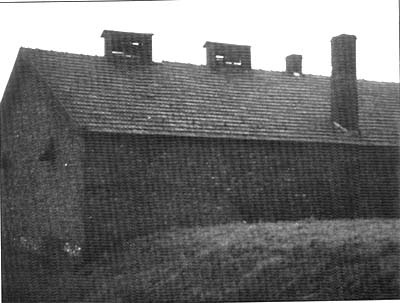|
|
 |
 |
AUSCHWITZ:
Technique
and Operation
of
the Gas Chambers © | |
|
| |
 |
Back |
 |
Contents |
Page 59 |
 |
Home
Page |
Forward |
 |
| |
| THE BW 5b GAS
CHAMBER |
| |
|
 |
|
| Photo 6: South
side |
| |
| |
 |
| Photo 7: East end
wall | |
| |
| |
 |
| |
Photo 8: North
side | |
| |
| |
On the left from ground level to
just below the chimney, bluish stains
can be seen on the bricks
of the wall, showing that hydrocyanic acid
was used there
( in 1942-44) for delousing purposes. In a homicidal
gas
chamber, the action of highly concentrated HCN was rapid and
intense (never more than 15 to 20 minutes), at a temperature
below
27°C, then the room was aired or artificially ventilated
to get rid of the
gas as quickly as possible and finally it was necessary
to burn all the corpses, so
that it was at least a day before
before a new cycle commenced. The
acid had time to attack
metallic parts superficially but but did not have
enough time to
impregnate and stain the brick. Conversely, the operation
of a
delousing gas chamber used much lower concentration, of HCN.
but
as a general rule and according to witnesses, the gas remained for
a very much longer time, from 16 to 18 hours, and a higher
temperature
was maintained by heating the chamber by stoves (for
example there
were three stoves in the BW 5b gas chamber).
From left to right on Photo 6: the outside entrance
to the "dirty" air
lock of BW 5b, the chimneys for the stoves
(probably three in all,
for on Photos 6 and 8 two
additional chimneys can be seen low on
the roof which do not
appear on the drawings), the two natural
ventilation openings on
the roof and the two wall orifices of the
extraction fans
(Photo
7). | |
| |
AUSCHWITZ:
Technique
and operation
of the gas chambers
Jean-Claude Pressac
© 1989, The
Beate Klarsfeld Foundation |
 |
Back |
Page 59 |
Forward |
 |
|

